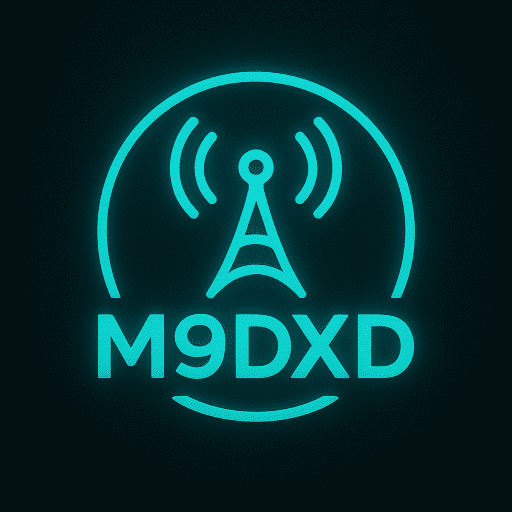Latest Forecast
Solar Cycle 25 started in December 2019 and is projected to reach its peak in 2025, according to predictions from an international panel of experts co-sponsored by NOAA and NASA. December 2019 marked the “Solar Minimum,” the period of lowest solar activity within the Sun’s approximately 11-year cycle.
Solar Cycle 25 — Where Are We Now?
Solar Cycle 25 (SC25) began in December 2019, following a solar minimum. Initially, forecasts put its peak around mid-2025 with a smoothed sunspot number of about 115 ± some margin.
However, the observed solar activity turned out stronger and earlier than many expected:
- The smoothed sunspot number reached its peak around October 2024.
- Solar flux and sunspot measures have been in a declining trend since that peak.
- In May and June 2025, solar flux values dropped to less than half of their cycle-peak levels (when viewed on an 81-day averaged basis).
So effectively, the “maximum phase” of SC25 is now behind us, and we are on its descending slope.
What This Means for Amateur Radio
HF / DX Conditions
- The best HF propagation conditions tend to happen around and just after the solar maximum. Because we are now past the peak, the very highest performance on HF (especially on high bands) will gradually diminish over coming years.
- However, there will still be many good opportunities for DX, especially on mid-bands (20 m, 15 m, 12 m) — though signals may become less consistent over time.
Sporadic E / VHF Opens
- Sporadic E (Es) on VHF bands (e.g. 6 m) is somewhat independent of solar cycle strength. It tends to peak seasonally (summer months) and can produce exciting VHF openings even outside solar maxima.
- As HF fades, many operators switch attention to VHF, UHF, and microwave bands where local & medium-range propagation (including Es, tropospheric ducting) become more prominent.
Solar Storms & Disruptions
- Even in the declining phase, solar activity can produce solar flares, CMEs (coronal mass ejections), and geomagnetic storms. These can temporarily black out HF bands, cause absorption events, or disturb propagation.
- Stay aware of space weather alerts and monitor indices like Kp, Ap, Solar Flux (F10.7), and sunspot number.
Revised Tips for Ham Operators (Given Current Cycle Stage)
- Use HF opportunistically — don’t rely on constant high performance on 10 m or 12 m, but when they open, make the most of them.
- Watch mid-bands — 20 m and 15 m will likely remain your go-to for long-distance QSOs for several years.
- Pivot to VHF/UHF & microwaves — invest in your VHF/SHF setup, antenna systems, and understand Es, tropo, and satellite modes.
- Track space weather & solar indices daily — they’ll give you clues when propagation will be good or degraded.
- Be ready for surprises — periodic boosts and bursts in ionospheric activity may occur even in a declining cycle, giving you bonus DX windows.
A- and K-Index:
The A and K indices measure geomagnetic activity, with higher values indicating more turbulent conditions in Earth’s magnetic field. When these indices are high (K > 5 or A > 20), geomagnetic storms occur, leading to unstable radio propagation and potential signal blackouts. This effect is most pronounced at high latitudes and in polar regions, where propagation may completely vanish.
Severe geomagnetic disturbances can also trigger aurora-related propagation, though this typically results in degraded long-distance communications. Conversely, when these indices are low, radio wave propagation tends to be more stable and favorable, particularly for transpolar communication paths.
The K-index ranges from 0 to 9, with classifications as follows:
- K0 – Inactive
- K1 – Very quiet
- K2 – Quiet
- K3 – Unsettled
- K4 – Active
- K5 – Minor storm
- K6 – Major storm
- K7 – Severe storm
- K8 – Very severe storm
- K9 – Extremely severe storm
Similarly, the A-index categorizes geomagnetic activity, with values ranging from 0 to over 400:
- A0 – A7 – Quiet
- A8 – A15 – Unsettled
- A16 – A29 – Active
- A30 – A49 – Minor storm
- A50 – A99 – Major storm
- A100 – A400 – Severe storm
Background X-ray Levels:
X-ray radiation levels from the Sun are classified as B (very low), C (low to moderate), M (moderate to high), and X (high to extremely high). The number following the letter indicates intensity—for example, an X0.1 flare is more intense than an M9.9. Increased X-ray activity can cause strong ionization in the D-layer of the atmosphere, leading to significant absorption of HF signals.
Solar Flux:
Solar flux measures the intensity of solar radiation at a wavelength of 10.7 cm (2800 MHz) and correlates with ultraviolet radiation, which helps generate the ionosphere. The lowest recorded value for solar flux is 63.75. At levels around 70, single-hop propagation can occur in lower latitude regions. Global long-distance (DX) propagation can begin at around 120, while an average solar flux of 170 is considered optimal for 10m-20m bands, allowing for worldwide communication using low-power (QRP) setups, even with a simple dipole antenna running as low as 5 watts.
Other Solar and Geomagnetic Indicators:
- 304A – Measures the Sun’s radiation at a wavelength of 304 Angstroms (30.4 nm). This loosely correlates with the Solar Flux Index.
- Proton Flux (PTN Flux) – Measures proton activity in the solar wind, primarily affecting the E-layer.
- Electron Flux (ELC Flux) – Measures electron activity in the solar wind, which also influences the E-layer.
- Aurora Activity (N Number) – Indicates the probability of auroral activity, rated on a scale from 0 to 5, with 0 indicating low probability and 5 indicating high probability.
